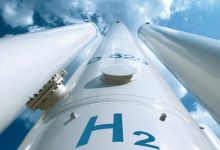The nascent Australian green hydrogen industry has received a major boost, with three 10MW electrolyser projects to share in more than $103 million in funding from the Australian Renewable Energy Agency (ARENA).
ARENA has selected the three projects -from more than 30 applications – to produce and supply green hydrogen for a mix of uses, including fertiliser production and blending in mains gas supplies.
It will see a total of $161 million invested across the three projects in some of Australia’s first commercial-scale green hydrogen production facilities.
Engie Renewables will build a 10MW electrolyser in Karratha in Western Australia, as part of a consortium with Yara Pilbara Fertilisers, with the help of a $42.5 million grant. As we reported in April, the project will be paired with an on-site solar farm to produce green hydrogen, which will be used in ammonia production, with the facility expected to commence production in 2023. The project is expected to produce up to 625 tons of renewable hydrogen annually and 3,7000 tons of renewable ammonia.
Gas company ATCO, who will partner with Australian Gas Infrastructure Group, will add a 10MW electrolyser to its Clean Energy Innovation Park in Warradarge in Western Australia that will supply up to 4 tons a day of green hydrogen for blending into the mains gas network. The project will be co-located with the 180MW Warradarge Wind Farm.
Australian Gas Infrastructure Group will also build a 10MW electrolyser at its Murray Valley Hydrogen Park in Wodonga, Victoria, which will also be used for mains gas blending, with the aid of a $32.1 million grant. This project will be located at the North East Water’s West Wodonga Wastewater Treatment Plant, providing access to supplies of both water and renewable electricity.
ARENA has initially committed $70 million to support new commercial scale green hydrogen production facilities, but has increased the funding envelope to ensure the projects go ahead.
“We’re excited to have chosen three projects we believe will help kickstart renewable hydrogen production in Australia at a large scale,” ARENA CEO Darren Miller said.
“Our hydrogen industry in Australia is in its infancy, so the lessons learned from these three projects – and the entire funding round – will be important in driving our future hydrogen economy.”
ARENA said that it had received 36 expressions of interest in the hydrogen funding round, and had narrowed the options to a shortlist of seven projects last year – a list that had been dominated by established gas companies.
“We have been very impressed with the response to the round and I’d like to thank all of the companies that submitted applications. With the round stimulating interest in the sector, we can see a number of well-progressed feasibility studies and large projects emerging. Australia is well placed to become a major player as the clean hydrogen market develops,” Miller added.
The types of projects selected mirrors recommendations made by former chief scientist Dr Alan Finkel, who has called for Australia’s – such as offsetting a portion of mains gas supplies, as a pathway to the wider use of hydrogen as a zero emissions fuel.
While two of the projects will mix green hydrogen into the mains gas supply, there are technical limitations to the amount of hydrogen that can replace fossil gas. Due to the different flame characteristics of hydrogen, which burns at a dramatically faster speed than fossil gas, a limit of around 10 per cent of the mains gas supply can be replaced with hydrogen before the performance of appliances is impacted.
ATCO Australia managing director Patrick Creaghan said the company’s project in Warradarge would help reduce emissions across Western Australia’s gas network while helping to boost the broader opportunities for the use of hydrogen as a fuel.
“The development of the CEIP has the dual benefit of not only contributing to the decarbonisation of the gas distribution network, it also allows us to generate the economies of scale required to expand the demand and use of renewable hydrogen as a commercially viable fuel,” Creaghan said.
Ammonia production has been identified as a high potential early use for green hydrogen, with an ability to be used as both a fertiliser and as an ideal medium for transporting hydrogen for export.
“Renewable hydrogen can decarbonise ammonia production, and renewable ammonia can serve as renewable feedstock for a variety of industrial uses, and even more importantly, renewable ammonia is one of the world’s most promising fuels for green power generation and shipping,” Tara Pilbara general manager Laurent Trost said.
With the ability to produce hydrogen using an electrolyser powered by renewable electricity, it is being touted as a potential zero emissions fuel and energy storage medium – with predictions suggesting hydrogen could become a multi-billion dollar export opportunity for Australia.
“Not only will these projects allow for new export opportunities, but they will build-up domestic demand so we are able to reduce emissions both here at home and overseas,” federal energy and emissions reduction minister Angus Taylor said. “We’re excited to be partnering with industry in regional Australia to unlock the energy and economic benefits of hydrogen.”








